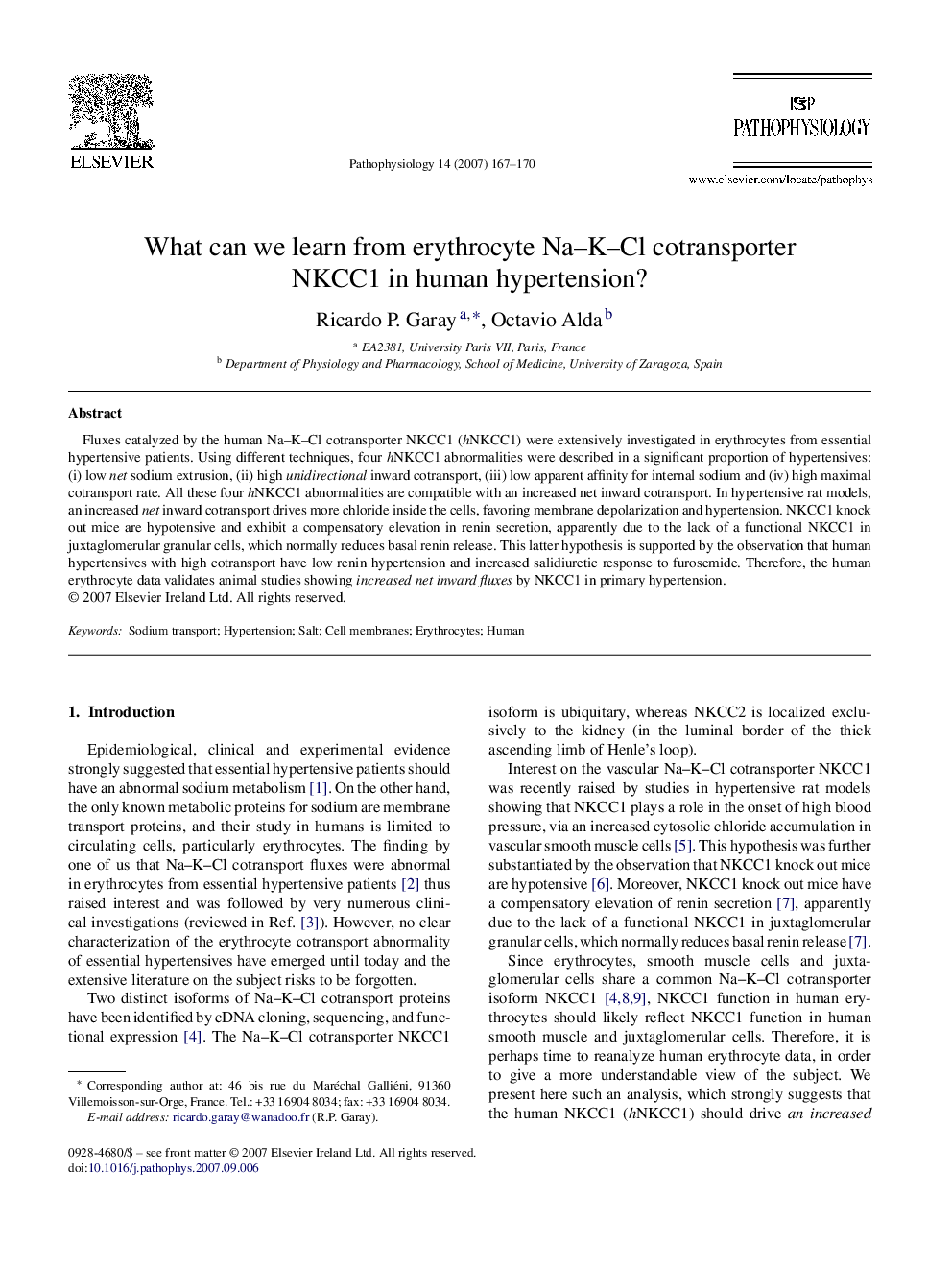| کد مقاله | کد نشریه | سال انتشار | مقاله انگلیسی | نسخه تمام متن |
|---|---|---|---|---|
| 4137163 | 1606694 | 2007 | 4 صفحه PDF | دانلود رایگان |

Fluxes catalyzed by the human Na–K–Cl cotransporter NKCC1 (hNKCC1) were extensively investigated in erythrocytes from essential hypertensive patients. Using different techniques, four hNKCC1 abnormalities were described in a significant proportion of hypertensives: (i) low net sodium extrusion, (ii) high unidirectional inward cotransport, (iii) low apparent affinity for internal sodium and (iv) high maximal cotransport rate. All these four hNKCC1 abnormalities are compatible with an increased net inward cotransport. In hypertensive rat models, an increased net inward cotransport drives more chloride inside the cells, favoring membrane depolarization and hypertension. NKCC1 knock out mice are hypotensive and exhibit a compensatory elevation in renin secretion, apparently due to the lack of a functional NKCC1 in juxtaglomerular granular cells, which normally reduces basal renin release. This latter hypothesis is supported by the observation that human hypertensives with high cotransport have low renin hypertension and increased salidiuretic response to furosemide. Therefore, the human erythrocyte data validates animal studies showing increased net inward fluxes by NKCC1 in primary hypertension.
Journal: Pathophysiology - Volume 14, Issues 3–4, December 2007, Pages 167–170